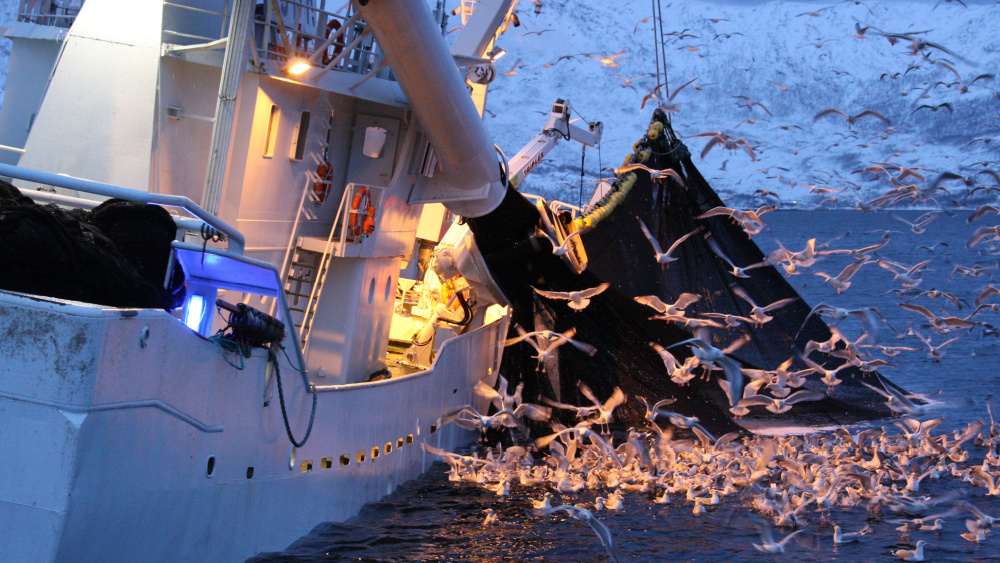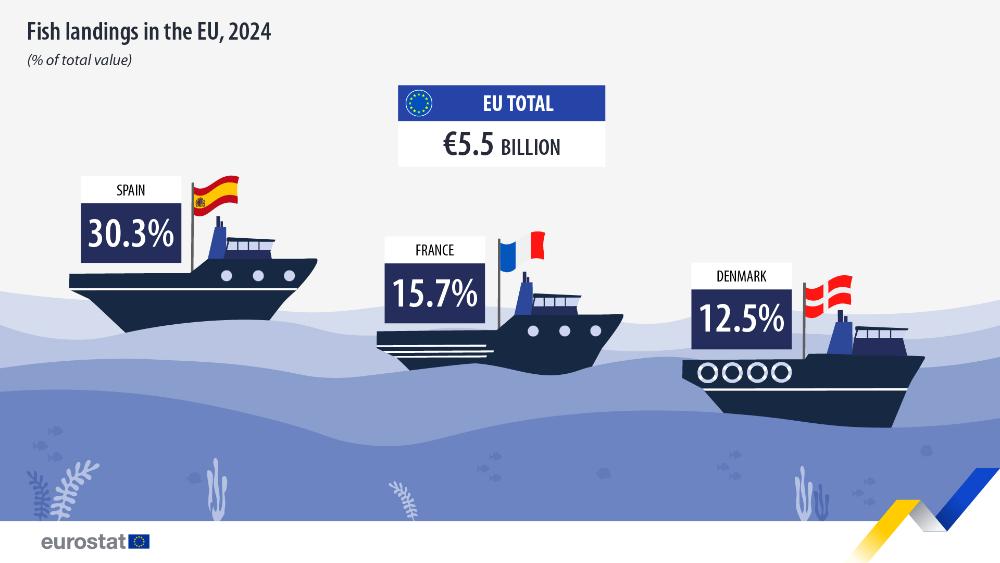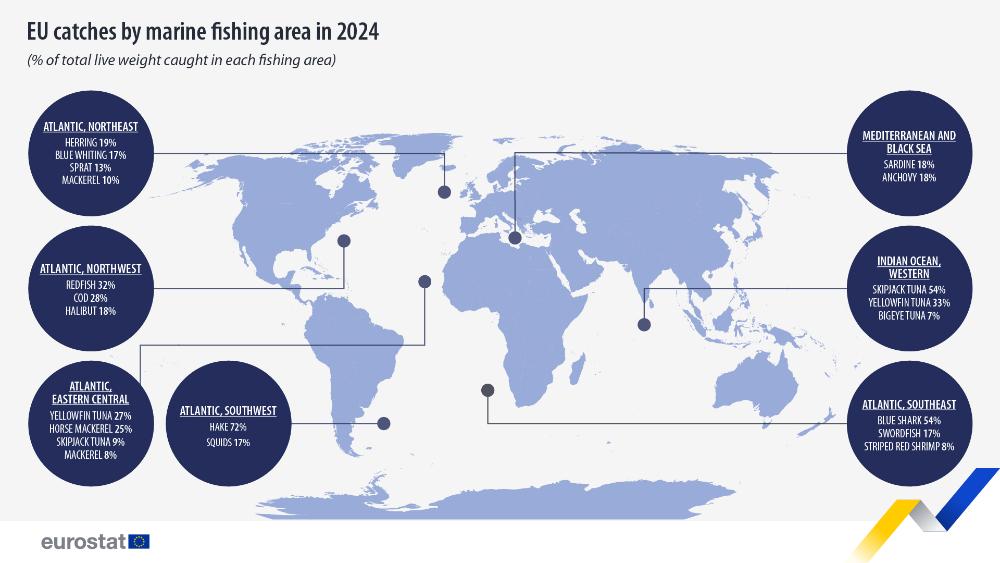In 2024, the total value of fisheries products landed in the EU was €5.5 billion. The EU’s fish catch was estimated at 3.2 million tonnes, taken from the 7 marine areas covered by EU statistics.
The value of fish landings was highest in Spain, accounting for 30% of the EU total. France followed with 16% and Denmark with 13%.
Source dataset: fish_ca_main
In terms of weight, the top 3 countries remained the same. Spanish fishing fleet caught 21% of the total fish mass, ahead of France (15%) and Denmark (14%).
Most EU catches were made in the Northeast Atlantic region
The majority (71%) of the fish catch made by the EU’s fishing fleet was in the Northeast Atlantic. The key species caught in this area were herring (19%), blue whiting (17%), sprat (13%) and mackerel (10%).
9% of the total EU catch was taken in the Mediterranean and Black Seas, with sardines and anchovies being the main species fished there (18% each).
Another 7% of the total EU catch was taken in the Eastern Central Atlantic area. The main catches in this area were yellowfin tuna and horse mackerel (accounting for 27% and 25% of the total catch there, respectively). Other key species caught were skipjack tuna (9%) and mackerel (8%).
Source datasets: fish_ca_main, fish_ca_atl27, fish_ca_atl34, fish_ca_atl37 and fish_ca_ind51
The Western Indian Ocean area contributed 6% to the total EU catch, with 3 tuna species dominating the take (accounting for 94% of the total). These were skipjack (54%), yellowfin (33%) and bigeye tuna (7%).
Another 5% of the EU catch came from the Southwest Atlantic area, mainly consisting of hake (72%) and squid (17%).
The remaining 2% of the total catch was taken in the Northwest and Southeast Atlantic region.
This article marks the World Fisheries Day celebrated on 21 November.



